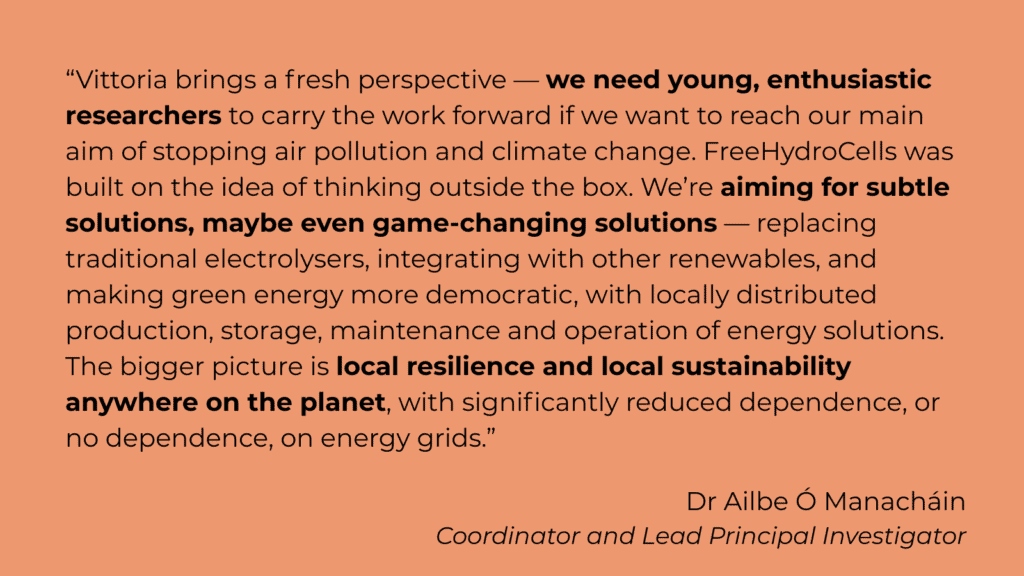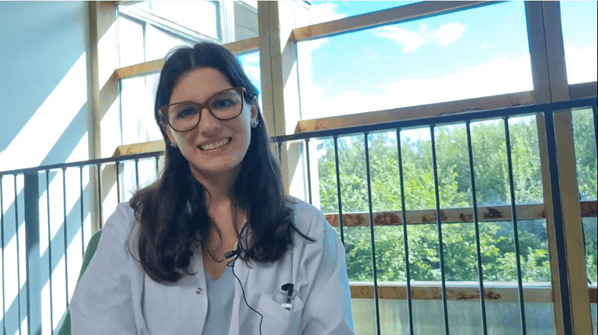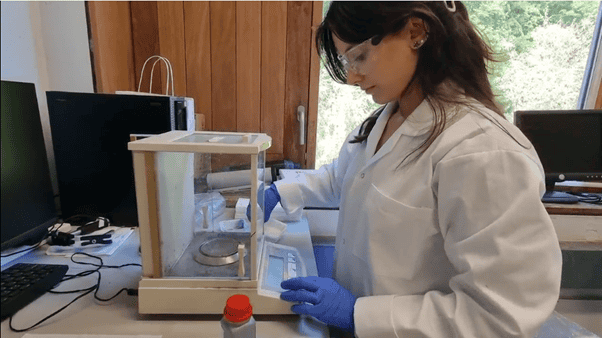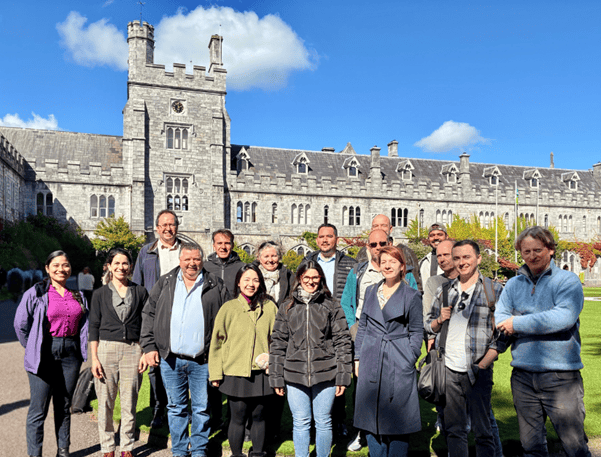
Follow along as we speak to Vittoria Anastasi, a PhD student from the University of Catania, Italy, in collaboration with CNR-IMM, Catania, Italy (a partner in the FreeHydroCells project). During 2025, Vittoria is seconded to the University College Cork (UCC) to complete a specific research collaboration activity as part of the FreeHydroCells Project that will contribute towards the completion of her PhD. Her journey through disciplines — from medicine to chemistry to materials science — reflects both her curiosity and commitment to sustainable innovation.
Tell us a little about your academic journey. How did you go from medicine to chemistry to materials science?
It started with a test-preparation course for medical school. I met a chemistry professor there who was just incredible. I honestly fell in love with chemistry because of how well he taught. From then on, I switched paths and pursued a bachelor’s in chemistry, then a master’s in organic chemistry. Now, I’m doing my PhD in material science and nanotechnology — so, yes, a few turns along the way!

What drew you to organic chemistry?
Again — a professor! He described organic chemistry like poetry. I remember every lesson. I knew then that I wanted to spend my time in the lab, experimenting and learning. Organic chemistry was my first love.
And what led you to this specific PhD in material science and nanotechnology?
I didn’t get selected in the first round of PhD admissions, but I was placed on a waiting list. Later, I got a call from my university — there was a new position, and I was next in line. At the time, I was already working with Prof. Salvatore Lombardo and Dr. Stefania Privitera at CNR-IMM, and they agreed to supervise my research. That’s how it all began.
What’s your role in the FreeHydroCells project?
I work with molybdenum disulfide (MoS₂), which I exfoliate, purify, and deposit onto fluorine-doped tin oxide (FTO) substrates by applying an external potential— a process known as electrodeposition. The method involves ultrasonication, centrifugation, and precise control of the MoS₂ layer thickness. MoS₂ exhibits strong absorption in the visible range, making it a promising material for light-harvesting applications. This activity is not part of the confidential work in FreeHydroCells, so I can talk about it freely.

What challenges have you faced working with these materials?
Achieving uniformity in deposition is the biggest one. If the MoS₂ layer is too thin, it doesn’t absorb enough light. Too thick, and your solar cell increases in energy loss. You have to find the perfect balance, which takes time and patience.
What’s been a proud moment in your research journey?
So many! I remember the first time I did exfoliation and deposition completely on my own. Also, my first optical and electrical measurements — these were big moments for me. At first, you doubt yourself — “Can I really do this?” — but then you do it, and that feeling is incredible.
You’ve moved countries after being seconded to a new team at UCC. What was that like?
At first, it was terrifying. I worried about being completely alone, about the language, the systems. But that fear disappeared quickly — especially after meeting Dr. Jun Lin and Dr. Ailbe Ó Manacháin. They welcomed me and made me feel supported right away. Everyone at UCC has helped me with my experiments, answered my questions, and made me feel at home.
FreeHydroCells is a big, multinational collaboration. What’s it like to be part of that?
I’ve never been part of something like this before. It’s amazing to see so many brilliant people working together — everyone contributes something unique. It’s inspiring. Sometimes I look around and think, “Wow, look at all these incredible minds working for one shared goal.”

Do you see yourself staying in academia or exploring industry?
I’m considering both. Academia is beautiful — you learn something new every day. But I’m also curious about industry, especially research and development. I’d love to explore both before deciding.
Would you want to continue in the area of photovoltaics and green hydrogen?
Yes, absolutely. I really like this field and hope to stay connected to sustainable energy and materials science.
What do you do to recharge outside the lab?
I have a lot of passions! I go to the gym early in the morning, I walk in nature or around the city, I read a lot, call my family, watch movies, spend time with friends. And I also love spending time alone — just me, music, a good book. That balance is important to me.
Finally, what advice would you give to young researchers or students?
Research can be scary, but don’t let fear stop you. Sometimes you’ll feel like it’s not working or you’re not good enough. But go ahead anyway. Maybe it will work, maybe it won’t — but you’ll never know if you don’t try.
And a message to the public about green hydrogen and sustainability?
This world is our home — and the home of future generations. Sustainable energy is the key to making that future possible. We need to respect our planet so it can support us in return. Green hydrogen and sustainability aren’t just science — they’re survival.
